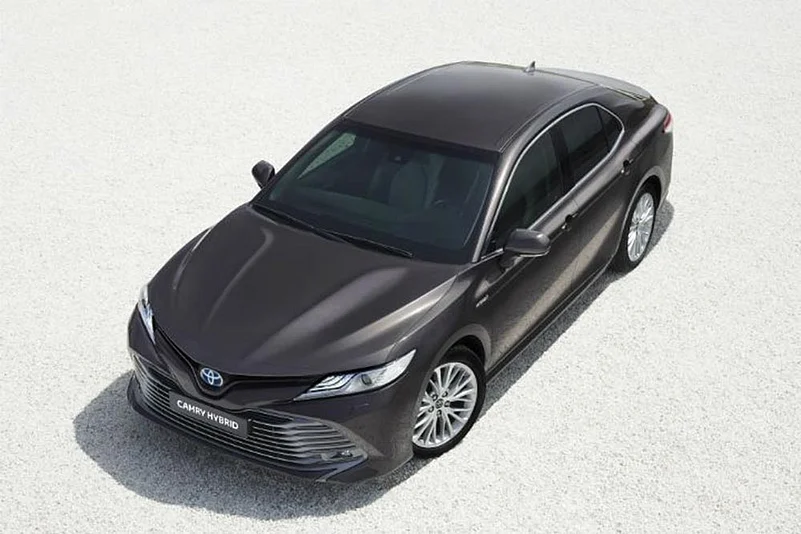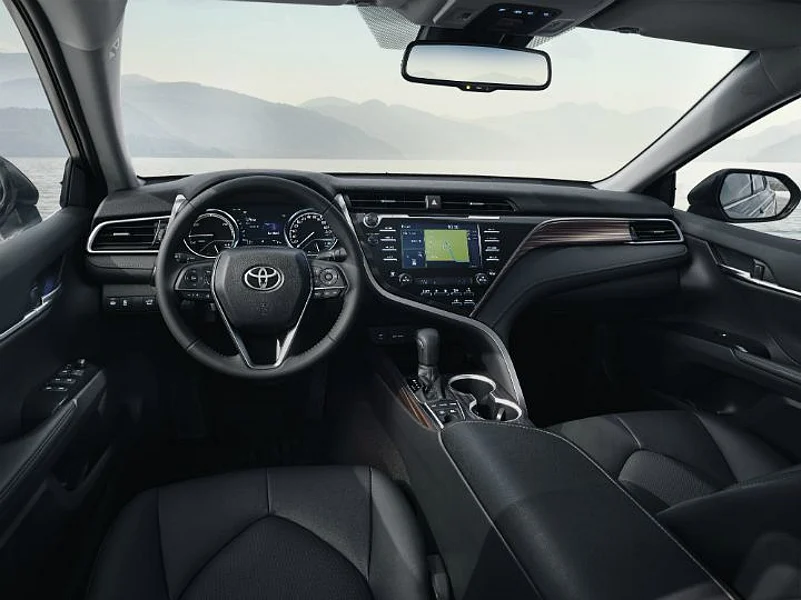The Toyota Camry has been among the most successful sedans in the world for a long time now, but with diesel powertrains dominating the European market for the last two decades Toyota had seen fit to stop selling the Camry there.?However, with increasing emphasis on sustainable mobility and the rapid demonisation of diesel happening across the western hemisphere, the Japanese manufacturer has reintroduced the Camry in its hybrid avatar in Europe after an absence of more than 14 years.
New Toyota Camry Hybrid Unveiled: Paris Motor Show 2018
The shift in focus away from diesel powertrains paves the way for the reintroduction of the Camry in Western Europe after an absence of 14 years.


Launched at the Paris Motor Show today, the Camry Hybrid comes with an entirely new 2.5-litre ‘self-charging’ hybrid engine setup that comprises a four-cylinder petrol engine, which works in tandem with an electric motor to churn out 221PS of power.?The new Toyota Hybrid System (THS II) includes sequential shiftmatic technology that allows quick-shifting, like a 6-speed automatic transmission through a console-mounted lever, a trait rarely found in CVTs.?The new Camry incorporates Toyota’s much acclaimed engine tech including Dual VVT-i with VVT-iE (Variable Valve Timing intelligent system by Electric motor) and D-4S (Direct injection 4-stroke gasoline engine Superior version) for optimal power output, emissions, performance and fuel efficiency. Toyota claims an efficiency of 23.8kmpl.

Inside, the dash houses a decent 8-inch touchscreen infotainment system, complimented by a 10-inch HUD and a 7-inch multi-information display to form Toyota’s Human Machine Interface, which offers seamless voice commands and on-board diagnostics. With a choice of leather or fabric upholstery, the new Camry Hybrid interior is available in two colour schemes with variations of beige and black.
What makes the Camry unmistakably identifiable on the road is its sheer presence and size. Built on the Toyota New Global Architecture Platform (TNGA) the new Camry Hybrid has a low centre of gravity and acres of cabin space, along with a whopping 524-litre boot. And according to Toyota, the lightweight, highly rigid bodyshell offers a substantial 30% increase in torsional rigidity over the outgoing model. This not only reduces vibrations and body roll in the car but also further enhances the overall handling and ride quality.

When it comes to safety, the new Toyota can rival the best in the business with a host of active and passive safety tech on board.?With a combination of digital optics and millimetre-wave radar tech, the onboard computers on the Camry can trigger safety features such as a Pre-Collision System (PCS) with a pedestrian detection function, Adaptive Cruise Control (ACC), Lane Departure Alert (LDA) with steering assist, Automatic High Beam (AHB) and Road Sign Assist (RSA).?The Camry’s body structure has been also designed to absorb front, side and rear impacts, dispersing collision energy to help prevent the deformation of the high-strength cabin area. It also comes standard with Toyota’s Safety Sense tech supplemented with blind spot and crossing traffic monitors.

Over a 19 million Camry’s have been sold globally till now and with deliveries of the new Hybrid likely to start in Europe early 2019, these numbers should keep on piling. In India though, the fate of the Camry has been mixed so far. Toyota had shut down production in October last year citing low demand after price increases post axing of the FAME scheme in India. With the government scrapping the FAME (Faster Adoption and Manufacturing of Hybrid and Electric Vehicles) scheme and increasing taxes on luxury vehicles, cars such as the Camry Hybrid cost more than their petrol and diesel counterparts. Even as Toyota has restarted production of the Camry in India, sales still continue to be lacklustre.
However, we believe hybrids are set to make a big comeback considering CAFE (Corporate Average Fuel Efficiency) norms are set to be introduced in India from the year 2022. Under this rule, carmakers will have to maintain a minimum standard of average fuel efficiency for cars across their portfolio. Hence, we expect carmakers to launch more hybrids and EVs along with conventionally powered cars to achieve the required target and the introduction of the updated Camy here should give a much needed push to the market as well.
Source: zigwheels.com
- Previous Story
 Ethanol-Blended Petrol To Hit Indian Fuel Market By December: Petroleum Minister Hardeep Singh Puri
Ethanol-Blended Petrol To Hit Indian Fuel Market By December: Petroleum Minister Hardeep Singh Puri - Next Story
























